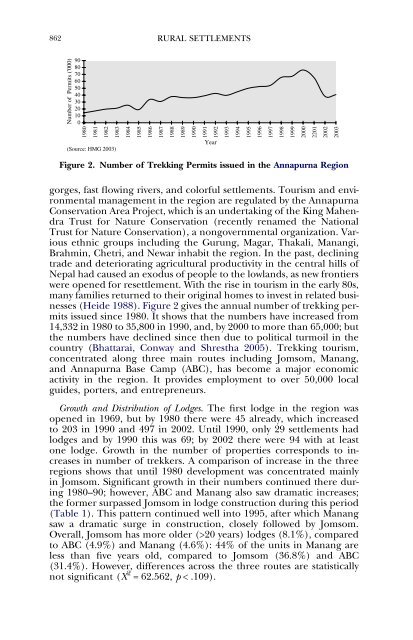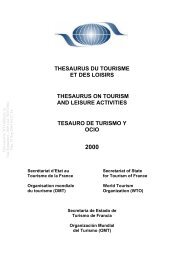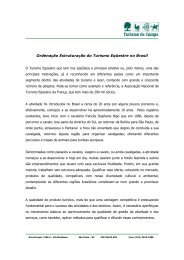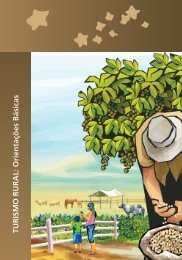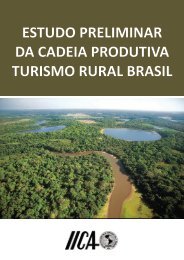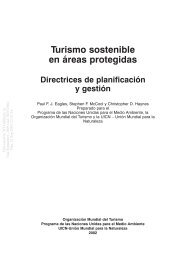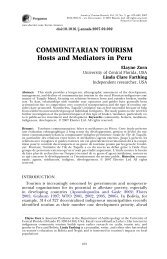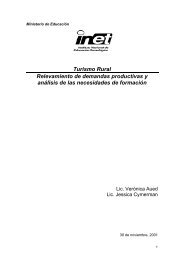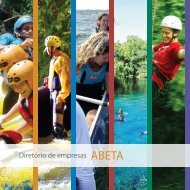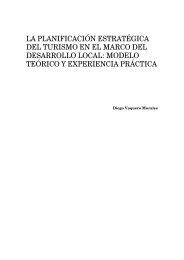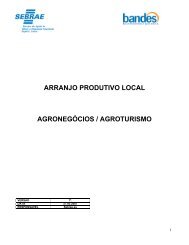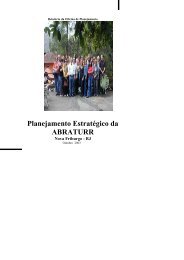TOURISM AND RURAL SETTLEMENTS Nepal's ... - ResearchGate
TOURISM AND RURAL SETTLEMENTS Nepal's ... - ResearchGate
TOURISM AND RURAL SETTLEMENTS Nepal's ... - ResearchGate
You also want an ePaper? Increase the reach of your titles
YUMPU automatically turns print PDFs into web optimized ePapers that Google loves.
862 <strong>RURAL</strong> <strong>SETTLEMENTS</strong><br />
Number of Permits ('000)<br />
90<br />
80<br />
70<br />
60<br />
50<br />
40<br />
30<br />
20<br />
10<br />
0<br />
1980<br />
1981<br />
1982<br />
1983<br />
(Source: HMG 2003)<br />
1984<br />
1985<br />
1986<br />
1987<br />
1988<br />
1989<br />
1990<br />
1991<br />
1992<br />
Year<br />
1993<br />
1994<br />
1995<br />
1996<br />
1997<br />
1998<br />
1999<br />
2000<br />
2201<br />
2002<br />
2003<br />
Figure 2. Number of Trekking Permits issued in the Annapurna Region<br />
gorges, fast flowing rivers, and colorful settlements. Tourism and environmental<br />
management in the region are regulated by the Annapurna<br />
Conservation Area Project, which is an undertaking of the King Mahendra<br />
Trust for Nature Conservation (recently renamed the National<br />
Trust for Nature Conservation), a nongovernmental organization. Various<br />
ethnic groups including the Gurung, Magar, Thakali, Manangi,<br />
Brahmin, Chetri, and Newar inhabit the region. In the past, declining<br />
trade and deteriorating agricultural productivity in the central hills of<br />
Nepal had caused an exodus of people to the lowlands, as new frontiers<br />
were opened for resettlement. With the rise in tourism in the early 80s,<br />
many families returned to their original homes to invest in related businesses<br />
(Heide 1988). Figure 2 gives the annual number of trekking permits<br />
issued since 1980. It shows that the numbers have increased from<br />
14,332 in 1980 to 35,800 in 1990, and, by 2000 to more than 65,000; but<br />
the numbers have declined since then due to political turmoil in the<br />
country (Bhattarai, Conway and Shrestha 2005). Trekking tourism,<br />
concentrated along three main routes including Jomsom, Manang,<br />
and Annapurna Base Camp (ABC), has become a major economic<br />
activity in the region. It provides employment to over 50,000 local<br />
guides, porters, and entrepreneurs.<br />
Growth and Distribution of Lodges. The first lodge in the region was<br />
opened in 1969, but by 1980 there were 45 already, which increased<br />
to 203 in 1990 and 497 in 2002. Until 1990, only 29 settlements had<br />
lodges and by 1990 this was 69; by 2002 there were 94 with at least<br />
one lodge. Growth in the number of properties corresponds to increases<br />
in number of trekkers. A comparison of increase in the three<br />
regions shows that until 1980 development was concentrated mainly<br />
in Jomsom. Significant growth in their numbers continued there during<br />
1980–90; however, ABC and Manang also saw dramatic increases;<br />
the former surpassed Jomsom in lodge construction during this period<br />
(Table 1). This pattern continued well into 1995, after which Manang<br />
saw a dramatic surge in construction, closely followed by Jomsom.<br />
Overall, Jomsom has more older (>20 years) lodges (8.1%), compared<br />
to ABC (4.9%) and Manang (4.6%): 44% of the units in Manang are<br />
less than five years old, compared to Jomsom (36.8%) and ABC<br />
(31.4%). However, differences across the three routes are statistically<br />
not significant (X 2 = 62.562, p < .109).


